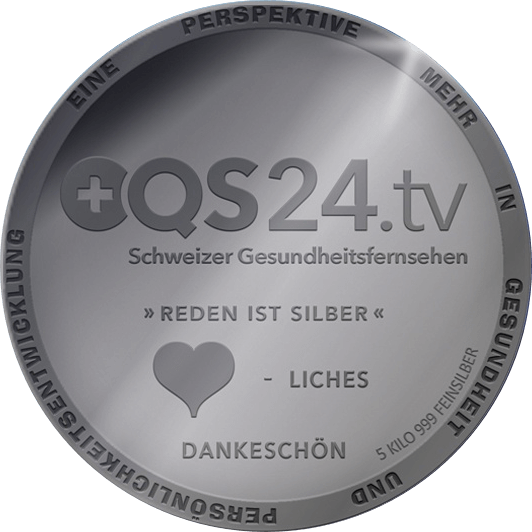We use two dental panoramic x ray methods at our clinic to gain more diagnostic information about each patient:
Orthopantomogram (OPG)
As part of our interference field diagnostics, we use this two-dimensional x ray of the upper and lower jaw. The image shows all teeth, both halves of the jaw with their alveolar processes, the jaw joints and parts of the maxillary sinuses.
The OPG allows the assessment of existing, dead and root-treated (root canal) teeth. During a root canal, the central channels of dead pulp tissue are cleaned using laser. But even with a careful, conventional treatment of these root canals, only about 40 to 60 percent of the dead pulp tissue is removed. The remaining tissue in the tooth decomposes and has a high content of protein. This dead protein then necrotizes, disintegrates and degrades via polypeptides. These are highly neurotoxic and degenerative "corpse poisons" that enter the organism relatively easily from the tooth, where they contaminate the immune and regulatory system of the organism in mini doses over decades.
A dead tooth is a toxicological depot and thus a permanent health problem. Each tooth correlates with an organ system, and thus causal relationships on a physical level can be unmasked (as a result of this tooth disturbance field). Often, the organism cannot cope with chronic degenerative inflammation on its own. The biological effect of these stresses then means constant stress for the immune system.
The OPG x ray also indicates inflammatory wisdom teeth, cysts in the jaw area, references to the heart/small intestine functional circle and helps to assess the inflammatory processes of the nasal sinuses.
Digital Volume Tomography (DVT)
The DVT is a three-dimensional procedure in dental and jaw diagnostics and allows us to identify interference fields that are not visible through the orthopantomogram (OPG). These interferences are part of the cause that massively trigger the development of particularly neurodegenerative processes (diseases of the nervous system).
In the context of our comprehensive diagnostics in chronic inflammatory diseases as well as tumors, no holistic diagnosis without a dental tomography is complete. We assume that inflammatory processes, for example after tooth extractions, may become degenerative over time if they are not treated or cured. Poor blood circulation, improper tooth extractions, embedded foreign bodies, amalgam residues, poor supply of minerals, vitamins and other vital building blocks required for perfect osteogenesis (bone formation), stress and other causes can accelerate this maldevelopment.
Degenerative processes require minimally invasive root canal treatment of the affected area. The result of these residual inflammations is reduced blood flow. Nowadays, we often find defects that extend over several centimeters and virtually completely hollow out the inside of the bone, especially in areas of former wisdom teeth. Almost all patients with neurodegenerative and inflammatory diseases such as ALS, Alzheimer’s, Parkinson’s and MS are affected.




